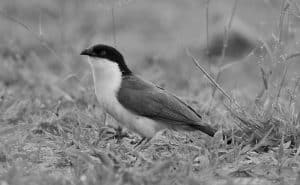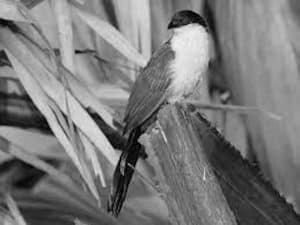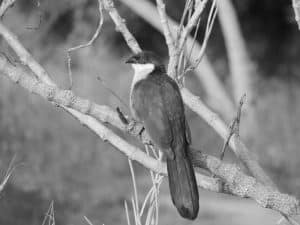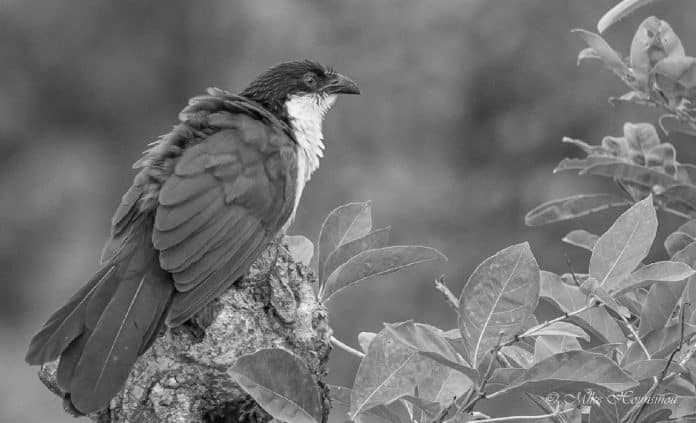Introduction to the Senegal Coucal in Tanzania
The Senegal Coucal in Tanzania is a medium-sized bird that belongs to the Cuculidae family. It is commonly found in various wetland habitats across Tanzania, including marshes, swamps, and flooded grasslands. This species is known for its secretive nature, often hiding within dense vegetation, making it a challenge to spot. However, its presence is often detected by its distinctive call, which consists of a series of low-pitched, resonating booms.
Habitat and Distribution of the Senegal Coucal

The Senegal Coucal is widely distributed across sub-Saharan Africa, including Tanzania. Within Tanzania, it can be found in various regions, including the Serengeti National Park, Selous Game Reserve, and the wetlands of Lake Victoria. This bird prefers habitats with dense vegetation, especially areas with tall grasses, reeds, and shrubs. These wetland ecosystems provide the necessary resources for the Senegal Coucal’s survival, including food, nesting sites, and protection from predators.
Physical Characteristics of the Senegal Coucal
The Senegal Coucal has a distinctive appearance, with a long tail, strong bill, and reddish-brown plumage. It has a black head and neck, which contrast with its chestnut-colored body. The eyes of the Senegal Coucal are bright red, adding to its striking appearance. This bird measures around 36 to 40 centimeters in length and has a wingspan of approximately 45 to 50 centimeters. Despite its seemingly clumsy appearance, the Senegal Coucal is a skilled flyer and can navigate through dense vegetation with ease.
Behavior and Diet of the Senegal Coucal
The Senegal Coucal is primarily a ground-dwelling bird, often foraging on the forest floor or within the thick vegetation of wetlands. It is an opportunistic feeder, consuming a wide range of prey including insects, small reptiles, frogs, and even small birds. This species is known for its ability to mimic the calls of other birds, adding to its secretive nature. The Senegal Coucal is also territorial, defending its feeding and nesting areas from intruders.
Breeding and Reproduction of the Senegal Coucal

The breeding season for the Senegal Coucal in Tanzania typically occurs between November and March. During this time, the male establishes a territory and attracts a female through a complex courtship display. Once a pair is formed, they build a nest together, usually constructed within dense vegetation. The female lays a clutch of 3 to 5 eggs, which are incubated by both parents for approximately 15 to 17 days. After hatching, the chicks are cared for by both parents and fledge within 20 to 23 days.
Conservation Status of the Senegal Coucal in Tanzania
The Senegal Coucal is currently classified as a species of least concern by the International Union for Conservation of Nature (IUCN). However, local populations may face threats due to habitat loss and degradation caused by human activities, such as agriculture and urbanization. Additionally, the draining of wetlands and the use of pesticides can have negative impacts on the Senegal Coucal and its prey species. Continued monitoring and conservation efforts are necessary to ensure the long-term survival of this species in Tanzania.
Challenges and Threats to the Senegal Coucal
The Senegal Coucal faces several challenges and threats to its survival in Tanzania. Habitat loss and fragmentation due to agricultural expansion and urban development are major concerns. The draining of wetlands for irrigation purposes also poses a threat to the availability of suitable habitats for the Senegal Coucal. Additionally, the use of pesticides in agricultural practices can indirectly impact the bird’s food sources, leading to a decline in prey availability.
Efforts and Initiatives for Conservation
Several efforts and initiatives have been undertaken to conserve the Senegal Coucal in Tanzania. Conservation organizations and local communities are working together to raise awareness about the importance of wetland ecosystems and the need to protect them. Wetland restoration projects have been implemented to create and enhance habitat for the Senegal Coucal and other wetland-dependent species. Additionally, research and monitoring programs are in place to assess the population trends and distribution of the Senegal Coucal in Tanzania.
Tips for Birdwatching the Senegal Coucal in Tanzania

If you are interested in birdwatching the Senegal Coucal in Tanzania, there are some tips to enhance your chances of spotting this elusive bird. Firstly, visit wetland areas during the early morning or late afternoon when the Senegal Coucal is most active. Look for areas with dense vegetation and listen for its distinctive call. Patience is key, as the Senegal Coucal may take some time to reveal itself. Binoculars and a field guide can be helpful for identification. Remember to respect the bird’s habitat and observe from a distance to avoid disturbing its natural behaviors.
Conclusion
The Senegal Coucal in Tanzania is a remarkable bird species that serves as a sentinel of the wetlands. Its presence indicates the health and vitality of these important ecosystems. By understanding its habitat and distribution, physical characteristics, behavior and diet, breeding and reproduction, as well as the challenges it faces, we can work towards its conservation. Through continued efforts and initiatives, we can ensure the long-term survival of the Senegal Coucal in Tanzania and appreciate its unique beauty for generations to come.


































